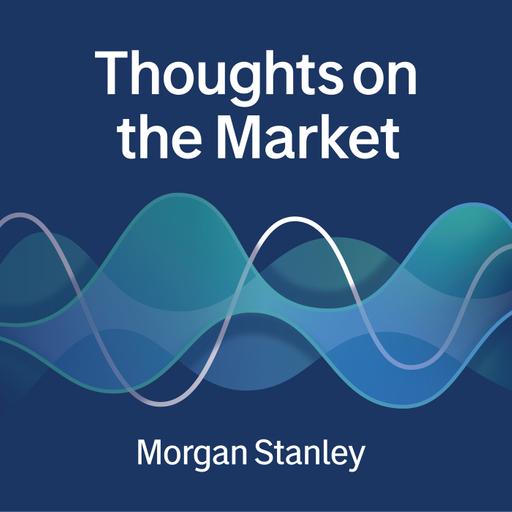
19 Aug 2025 09:00
Why Credit Is Core to AI Expansion
Our Chief Fixed Income Strategist Vishy Tirupattur brings in Vishwas Patkar, Head of U.S. Credit Strategy, and Carolyn Campbell, Head of Consumer and Commercial ABS Research, to explain our high conviction on the role of credit markets in data center financing.
Read more insights from Morgan Stanley.
----- Transcript -----
Vishy Tirupattur: Welcome to Thoughts on the Market. I am Vishy Tirupattur, Morgan Stanley’s Chief Fixed Income Strategist.
Vishwas Patkar: I'm Vishwas Patkar, Head of U.S. Credit Strategy.
Carolyn Campbell: And I'm Carolyn Campbell, Head of Consumer and Commercial ABS Research.
Vishy Tirupattur: Today we'll talk about the feedback – and pushback – we've received on the data center financing note we wrote a few weeks ago.
It's Tuesday, August 19th at 10am In New York.
In the week since we published a report on bridging the data center financing gap, we were met with a wide range of investors to discuss the key takeaways from our report.
We projected that meeting the data center demand requires something like $3 trillion of capital expenditure by 2028. And we projected that about half of this funding will come from hyperscaler cash flows, but the rest financed through different channels of the credit markets.
So, Vishwas, some of the skeptics invoke comparisons to prior CapEx cycles, particularly the late 1990s telecom boom that did not quite end well. How would you respond to that skepticism?
Vishwas Patkar: The 1990s telecom CapEx cycle certainly came up in a lot of our meetings. It was the last time we arguably saw CapEx cycle of this magnitude. I think the counter to this is that there are some very important differences versus what we saw then versus what we expect. Most importantly, the CapEx cycle back then was largely financed on corporate balance sheets, and we saw pretty significant uptake in debt issuance and leverage.
Also, through the 1990s, the names, the companies that were spending were mid- to low-credit quality and not cash rich. That's very different from the hyperscalers that are in the center of the AI spending. And these companies are very cash rich, and their credit ratings range all the way from AAA to high A. So very much at the top end of the spectrum.
In addition, we are quite optimistic about AI monetization, both the timeline and the magnitude. Some of this has also already been validated through second quarter earnings. We also think financing will be done through multiple channels going forward and it won't largely flow through to corporate debt. In fact, corporate debt issuance is actually a pretty small number of how we think this [$]3 trillion number will be met. And you know, the private credit piece, that we have talked about a lot in this report; we think it's likely to be skewed towards IG ratings, in many cases backed by contractual cash flows from credit worthy tenants.
So, the risk, in some ways, could come from the sub investment grade non-hyperscaler type tenants. And that's an important theme to be watching. But by and large, this cycle is very different in our view from the late 1990s.
Vishy Tirupattur: So, Carolyn, another pushback, is that the market will be overbuilt and won't be able to refinance in say, five years…
Carolyn Campbell: Yeah, Vishy. This is a really big concern, particularly for securitized credit investors. We're starting to see some of the ABS and CMBS deals look to refinance even this year, and that will pick up as time goes on and these deals hit their five-year maturities.
However, the biggest challenge to building new data centers in
